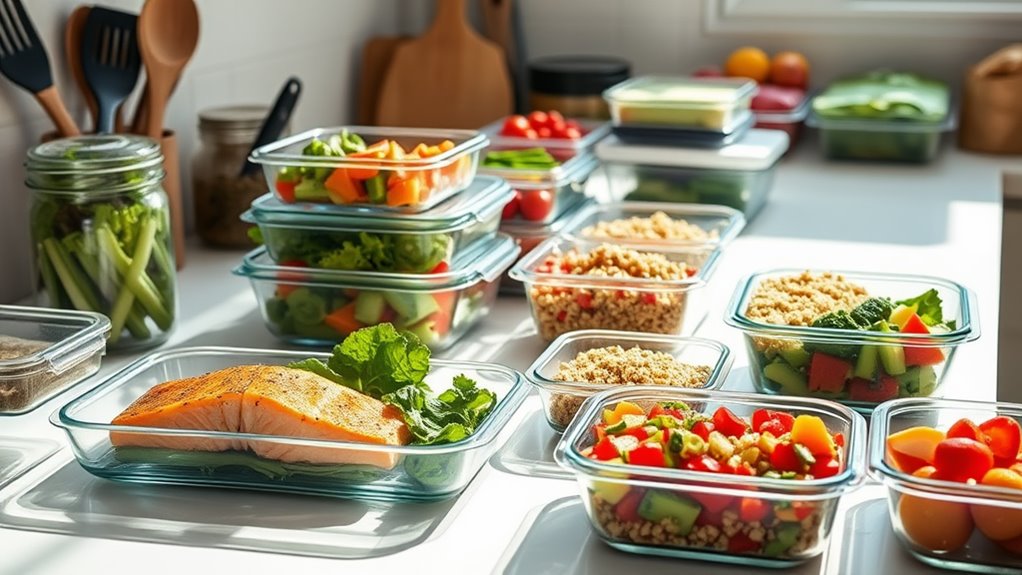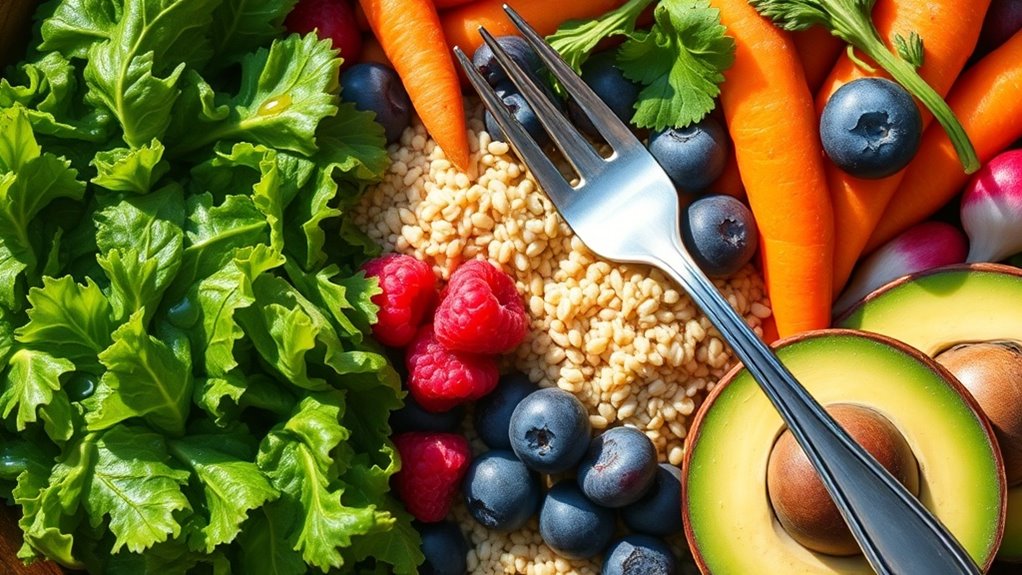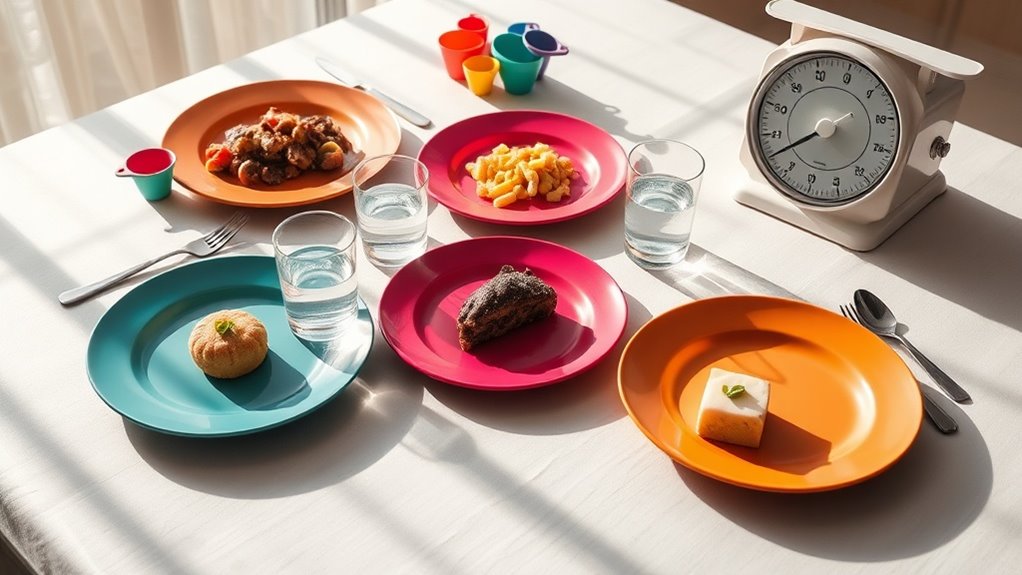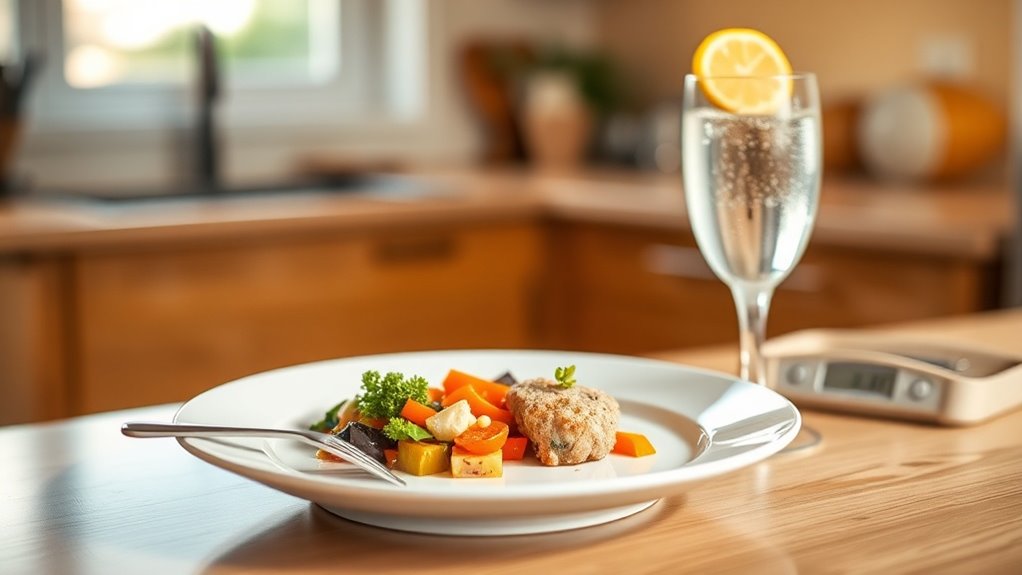Meal Prep Like a Pro- How to Stay on Track With Healthy Eating Every Week!
You’ve likely struggled with maintaining healthy eating habits, but meal prep can change that. Start by equipping yourself with essential tools like sharp knives and food scales for efficient, accurate results. Once you master this foundation, you’ll uncover strategies to build routines that keep you on track week after week.
Key Takeaways
- Plan your weekly meals in advance, focusing on balanced nutrition to maintain healthy eating habits.
- Use essential tools like sharp knives and food scales for efficient and accurate meal preparation.
- Create a detailed shopping list based on your meal plan to select fresh, nutrient-rich ingredients.
- Batch cook larger quantities of versatile recipes to save time and ensure consistent healthy options.
- Store meals in airtight containers with proper labeling, and rotate ingredients for variety and safety.
Essential Tools for Meal Prep
When you’re diving into meal prep, the right tools can transform your routine from chaotic to efficient.
You’ll need sharp knives for quick, precise cuts, reducing prep time by up to 50% according to kitchen efficiency studies. Invest in durable cutting boards to protect surfaces and maintain hygiene.
Airtight containers keep meals fresh, minimizing waste and preserving nutrients. A food scale ensures accurate portions, supporting balanced nutrition.
Meal prep becomes seamless with these essentials, empowering you to create healthy meals effortlessly and stick to your goals without unnecessary hassle.
Additionally, a quality food processor can speed up chopping and blending tasks to enhance your efficiency.
Building a Weekly Meal Plan
With your tools set up, you can now build a weekly meal plan that aligns meals with your goals, drawing on studies showing that structured planning boosts adherence to healthy diets by 30%.
Start by assessing your nutritional needs, such as calorie targets from reliable sources like the Academy of Nutrition and Dietetics.
Select balanced recipes featuring whole foods—lean proteins, fiber-rich veggies, and complex carbs—to promote satiety and prevent deficiencies.
Schedule meals for each day, rotating options for variety and accounting for your lifestyle, as evidence from behavioral studies confirms this reduces decision fatigue and supports long-term success.
To make your plan more effective, create a shopping list based on your planned recipes to avoid impulse buys and ensure you have all necessary ingredients.
Smart Grocery Shopping Strategies
When you plan your list based on your weekly meal plan, you’ll avoid impulse buys and focus on nutritious options that align with your goals.
You’ll choose fresh produce like vibrant fruits and vegetables, which provide essential vitamins and help maintain meal quality.
Finally, you’ll compare store prices to stretch your budget without compromising on healthy, high-quality ingredients.
Moreover, consider visiting local farmers markets for organic and seasonal items to enhance your access to fresh, nutrient-rich foods.
Plan Your List
Planning your grocery list effectively is the foundation of smart shopping for healthy eating.
You’ll start by basing it on your weekly meal plan, noting precise quantities to prevent overbuying.
Categorize items into groups like proteins, grains, and snacks for streamlined trips, and always inventory your pantry first to avoid duplicates.
Set realistic budgets per category, as research from the Academy of Nutrition and Dietetics confirms this curbs impulse purchases and waste.
This methodical approach empowers you to shop efficiently, saving time and money while supporting your health goals.
Choose Fresh Produce
Choose fresh produce that aligns with your meal plan to maximize nutrition and minimize waste.
You’ll spot the freshest options by checking for vibrant colors, firm textures, and no signs of bruising or wilting—evidence shows these indicators preserve vitamins and antioxidants.
Opt for seasonal varieties; they’re nutrient-dense and flavorful, reducing spoilage risk.
Incorporate a mix of fruits and vegetables to cover essential nutrients like fiber and vitamins C and K, as supported by dietary guidelines.
This approach ensures your meals are balanced, supporting long-term health goals effectively.
Stay consistent for optimal results.
Compare Store Prices
To save money on your groceries, compare prices across stores before you shop, as this strategy helps you identify the best deals and avoid overpaying.
Use apps like Flipp or websites such as Grocery.com to scan for weekly ads and unit prices, ensuring you’re getting the most value per item.
For instance, studies show shoppers save up to 20% by comparing, especially on staples like produce.
Track seasonal discounts and loyalty programs; this evidence-based approach keeps your meal prep budget in check without compromising nutrition.
Always verify in-store for accuracy to maximize savings effectively.
Batch Cooking Techniques
You plan your batch recipes ahead to streamline healthy meal prep, selecting versatile ingredients that maximize nutrition and minimize waste.
By adopting efficient cooking steps, you prepare large quantities in one go, cutting down on daily kitchen time while maintaining meal quality.
Finally, you master storage and reheating methods to preserve flavors and safety, ensuring your prepped meals stay fresh for the week.
To enhance nutritional value, incorporate lean proteins like chicken or tofu into your batches for better satiety and weight loss support.
Batch Recipe Planning
Batch recipe planning streamlines meal prep by preparing multiple servings at once, drawing on proven techniques to save time and boost nutritional consistency.
You’ll choose versatile recipes that scale up easily, like grain bowls or salads, based on evidence from nutrition studies showing reduced decision fatigue.
Focus on balancing macronutrients—aim for 50% veggies, 25% protein, and 25% carbs—to maintain variety.
Use tools like a digital planner to list ingredients and portion sizes ahead, minimizing waste as research indicates this method cuts weekly shopping by 20%.
This strategy keeps your diet reliable and enjoyable.
Efficient Cooking Steps
Efficient cooking steps transform batch preparation into a streamlined process, maximizing time savings through techniques like pre-chopping vegetables and using multi-pot methods.
You’ll boost efficiency by adopting an assembly-line approach, where you group similar tasks—such as grilling proteins in bulk or simmering sauces simultaneously—to cut cooking time by up to 50%, as studies show.
Focus on high-yield recipes; for instance, roast a week’s worth of veggies on one tray, freeing you to multitask.
This evidence-backed strategy empowers you to prepare meals faster, maintaining nutritional integrity without extra effort.
Stay consistent, and you’ll master weekly healthy eating effortlessly.
Storage and Reheating
Properly storing batch-cooked meals in airtight containers and refrigerating them within two hours helps maintain safety and nutrition, as USDA guidelines confirm this reduces bacterial growth by up to 90%.
You’ll keep your meals fresh by using glass or BPA-free containers to avoid chemical leaching, and always label them with dates.
Refrigerate for up to four days or freeze for three months to preserve quality.
When reheating, heat to an internal 165°F using a thermometer—whether in the microwave, oven, or stovetop—to eliminate bacteria and retain nutrients.
This evidence-based approach ensures your meals stay safe, flavorful, and aligned with your healthy eating goals.
Proper Storage and Reheating Tips
Once you’ve prepared your meals, store them in airtight containers to preserve freshness and prevent bacterial growth.
You’ll extend shelf life by refrigerating cooked foods at or below 40°F (4°C) for up to four days, or freezing them for up to three months, as recommended by USDA guidelines.
Label containers with dates to track freshness.
For reheating, use a microwave, oven, or stovetop, ensuring foods reach an internal temperature of 165°F (74°C) to eliminate bacteria—check with a food thermometer.
This practice maintains nutritional value and reduces waste, keeping your meal prep safe and effective.
Additionally, utilizing quality storage containers will help keep your meals fresh and organized, as emphasized in efficient meal preparation techniques.
Adding Variety to Your Meals
How can you keep your meal prep engaging and nutritious?
By incorporating variety, you’ll prevent burnout and ensure a broad nutrient intake, as studies show diverse diets reduce the risk of micronutrient deficiencies.
Rotate proteins like chicken, fish, and plant-based options such as lentils weekly to hit different amino acids.
Experiment with colorful veggies—swap spinach for kale or add herbs like cilantro for flavor bursts.
Try new cuisines, like Mediterranean salads or Asian stir-fries, using seasonal produce for freshness.
Track your meals in a journal to maintain balance, making prep sustainable and enjoyable long-term.
Incorporate leafy greens to enhance your meals with essential nutrients and minimal calories, promoting overall health and satiety.




